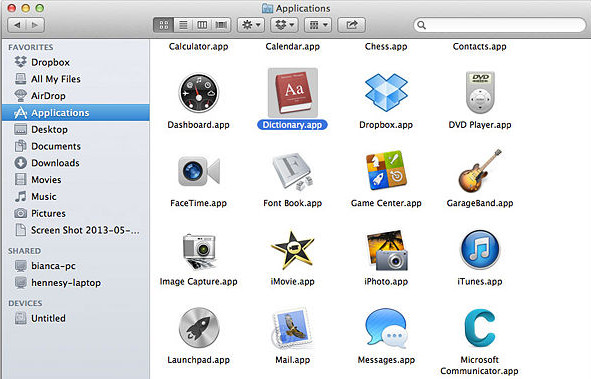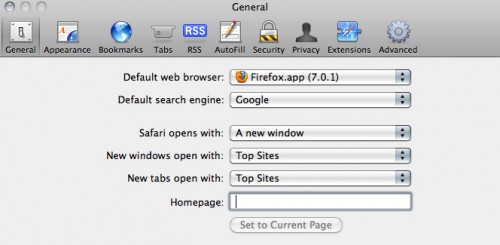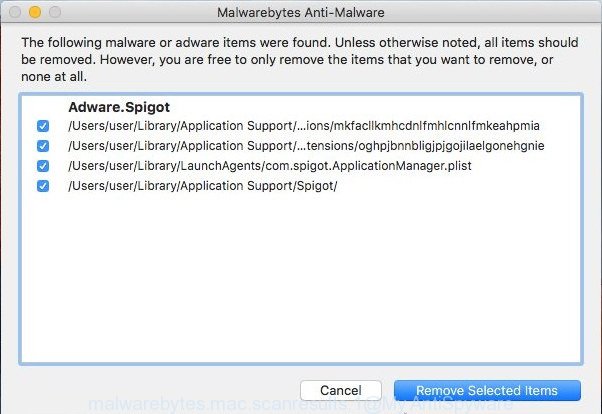Cyber security professionals called the PublicAdviseSearch a potentially unwanted application (PUA) and a browser hijacker because it is designed to take over the web browser and control user’s surfing preferences. The PublicAdviseSearch can sneak into the MAC system unnoticed due to the fact that it’s actively being promoted in freeware. It commonly aims at Chrome web browser, but it’s possible that it can affect other web browsers too. We suggest you to remove PublicAdviseSearch as soon as it hijacks your start page or search provider.
When the PublicAdviseSearch browser hijacker is installed on a MAC, it can:
- set an unwanted web-site as default search engine, newtab page, and start page;
- prevent users from replacing search provider or home page address;
- reroute your queries to sponsored web-pages;
- provide altered search results;
- record your search queries;
- periodically redirects to questionable web-sites;
- display unwanted ads;
- gather Internet surfing habits and sell it to third party companies.
Moreover, an adware program can be additionally installed on to your MAC by this hijacker that will open a huge number of ads, or even massive full page advertisements that blocks surfing the Internet. Often such these advertisements can recommend to install other unknown and unwanted programs or visit malicious web-pages.
Threat Summary
| Name | PublicAdviseSearch, PublicAdviseSearchDaemon |
| Type | browser hijacker, search provider hijacker, startpage hijacker, toolbar, unwanted new tab, redirect virus |
| Symptoms |
|
| Removal | PublicAdviseSearch removal guide |
If your internet browser has been infected by the PublicAdviseSearch browser hijacker, you must have complete any of the steps above. Once you have cleaned your Apple Mac by following our step-by-step guidance below, make sure not to commit the same mistakes again in the future.
How to remove PublicAdviseSearch from Chrome, Firefox, Safari
If you have unwanted start page or search provider, consistent popups or advertisements, slow computer, freezing MAC issues, you are in need of browser hijacker removal assistance. The step-by-step instructions below will guide you forward to get PublicAdviseSearch ‘virus’ removed and will assist you get your MAC operating at peak capacity again.
To remove PublicAdviseSearch, use the steps below:
- How to remove PublicAdviseSearch search without any software
- How to get rid of PublicAdviseSearch with free software
- How to stay safe online
- How to PublicAdviseSearch browser hijacker get installed onto MAC system
- Finish words
How to remove PublicAdviseSearch without any software
If you perform exactly the step-by-step guidance below you should be able to delete the PublicAdviseSearch from the Mozilla Firefox, Safari and Google Chrome web browsers.
Delete PublicAdviseSearch associated software by using the Finder
The process of hijacker infection removal is generally the same across all versions of Mac operating system. To start with, it’s necessary to check the list of installed programs on your MAC system and uninstall all unused, unknown and suspicious programs.
Open Finder and click “Applications”.

Carefully browse through the list of installed software and remove all dubious and unknown applications.
Once you have found anything dubious that may be the PublicAdviseSearch or other potentially unwanted application (PUA), then right click this program and select “Move to Trash”. Once complete, Empty Trash.
Get rid of PublicAdviseSearch from Safari
The Safari reset is great if your browser is hijacked by PublicAdviseSearch or you’ve unwanted extensions or toolbars on your web-browser, that installed by a malware.
Run Safari web-browser. Next, choose Preferences from the Safari menu.

First, click the “Security” tab. Here, choose “Block pop-up windows”. It will stop some types of pop ups.
Now, click the “Extensions” tab. Look for questionable addons on left panel, select it, then press the “Uninstall” button. Most important to remove all suspicious extensions from Safari.
Once complete, check your homepage and search provider settings. Click “General” tab. Make sure that the “Homepage” field contains the website you want or is empty.

Make sure that the “Search engine” setting shows your preferred search provider. In some versions of Safari, this setting is in the “Search” tab.
Remove PublicAdviseSearch from Google Chrome
Use the Reset browser tool of the Google Chrome to reset all its settings like search engine by default, homepage and newtab page to original defaults. This is a very useful utility to use, in the case of web-browser hijacks such as PublicAdviseSearch.
Open the Chrome menu by clicking on the button in the form of three horizontal dotes (![]() ). It will display the drop-down menu. Choose More Tools, then click Extensions.
). It will display the drop-down menu. Choose More Tools, then click Extensions.
Carefully browse through the list of installed plugins. If the list has the plugin labeled with “Installed by enterprise policy” or “Installed by your administrator”, then complete the following steps: Remove Chrome extensions installed by enterprise policy otherwise, just go to the step below.
Open the Google Chrome main menu again, click to “Settings” option.

Scroll down to the bottom of the page and click on the “Advanced” link. Now scroll down until the Reset settings section is visible, as on the image below and click the “Reset settings to their original defaults” button.

Confirm your action, click the “Reset” button.
Remove PublicAdviseSearch from Firefox
Resetting Mozilla Firefox web-browser will reset all the settings to their original settings and will remove PublicAdviseSearch, malicious add-ons and extensions. Your saved bookmarks, form auto-fill information and passwords won’t be cleared or changed.
First, launch the Mozilla Firefox. Next, click the button in the form of three horizontal stripes (![]() ). It will display the drop-down menu. Next, click the Help button (
). It will display the drop-down menu. Next, click the Help button (![]() ).
).

In the Help menu click the “Troubleshooting Information”. In the upper-right corner of the “Troubleshooting Information” page press on “Refresh Firefox” button as shown in the following example.

Confirm your action, click the “Refresh Firefox”.
How to get rid of PublicAdviseSearch with free software
Manual removal steps does not always help to completely get rid of the browser hijacker infection, as it’s not easy to identify and remove components of browser hijacker and all malicious files from hard disk. Therefore, it is recommended that you use malicious software removal utility to completely remove PublicAdviseSearch off your Apple Mac. Several free malicious software removal utilities are currently available that can be used against the browser hijacker infection. The optimum way would be to run MalwareBytes Free.
Run MalwareBytes AntiMalware (MBAM) to delete PublicAdviseSearch start page
If you’re still having issues with the PublicAdviseSearch ‘virus’ removal or just wish to scan your MAC system occasionally for browser hijacker infection and other malicious software, then download MalwareBytes Free. It is free for home use, and searches for and deletes various unwanted software that attacks your MAC system or degrades MAC system performance. MalwareBytes Anti-Malware can get rid of adware, potentially unwanted applications as well as malware, including ransomware and trojans.

- Download MalwareBytes from the link below.
Malwarebytes Anti-malware (Mac)
21177 downloads
Author: Malwarebytes
Category: Security tools
Update: September 10, 2020
- When the download is done, close all programs and windows on your MAC OS. Open a folder in which you saved it. Run the downloaded file and follow the prompts.
- Click the “Scan” button to begin checking your MAC system for the PublicAdviseSearch hijacker. Depending on your MAC OS, the scan can take anywhere from a few minutes to close to an hour. While the MalwareBytes tool is checking, you may see number of objects it has identified as being infected by malicious software.
- When the scan is done, you can check all threats found on your computer. Once you have selected what you wish to remove from your MAC system click “Remove Selected Items”.
How to stay safe online
We suggest to install an adblocker program which can stop unwanted ads and browser redirects. The adblocker tool like AdGuard is a program which basically removes advertising from the Net and blocks access to malicious web-sites. Moreover, security experts says that using ad-blocking software is necessary to stay safe when surfing the Internet.

Installing the AdGuard is simple. First you’ll need to download AdGuard on your Apple Mac from the link below.
3892 downloads
Author: © Adguard
Category: Security tools
Update: January 17, 2018
After the downloading process is complete, run the downloaded file. The “Setup Wizard” window will show up on the computer screen.
Follow the prompts. AdGuard will then be installed. A window will show up asking you to confirm that you want to see a quick guidance. Press “Skip” button to close the window and use the default settings, or click “Get Started” to see an quick instructions that will allow you get to know AdGuard better.
Each time, when you start your MAC OS, AdGuard will launch automatically and stop unwanted ads, block harmful or misleading web-pages.
How to PublicAdviseSearch browser hijacker get installed onto MAC system
Usually, PublicAdviseSearch hijacker gets into your machine as part of a bundle with free programs, sharing files and other unsafe apps that you downloaded from the World Wide Web. The creators of this hijacker infection pays software makers for distributing PublicAdviseSearch hijacker within their programs. So, bundled software is often included as part of the install package. In order to avoid the setup of any browser hijackers like PublicAdviseSearch: choose only Manual, Custom or Advanced setup option and uncheck all optional apps in which you are unsure.
Finish words
After completing the steps above, your MAC should be clean from this browser hijacker and other malware. The Mozilla Firefox, Safari and Google Chrome will no longer open unwanted web-page on startup. Unfortunately, if the few simple steps does not help you, then you have caught a new browser hijacker, and then the best way – ask for help.
Please create a new question by using the “Ask Question” button in the Questions and Answers. Try to give us some details about your problems, so we can try to help you more accurately. Wait for one of our trained “Security Team” or Site Administrator to provide you with knowledgeable assistance tailored to your problem with the PublicAdviseSearch ‘virus’.


















